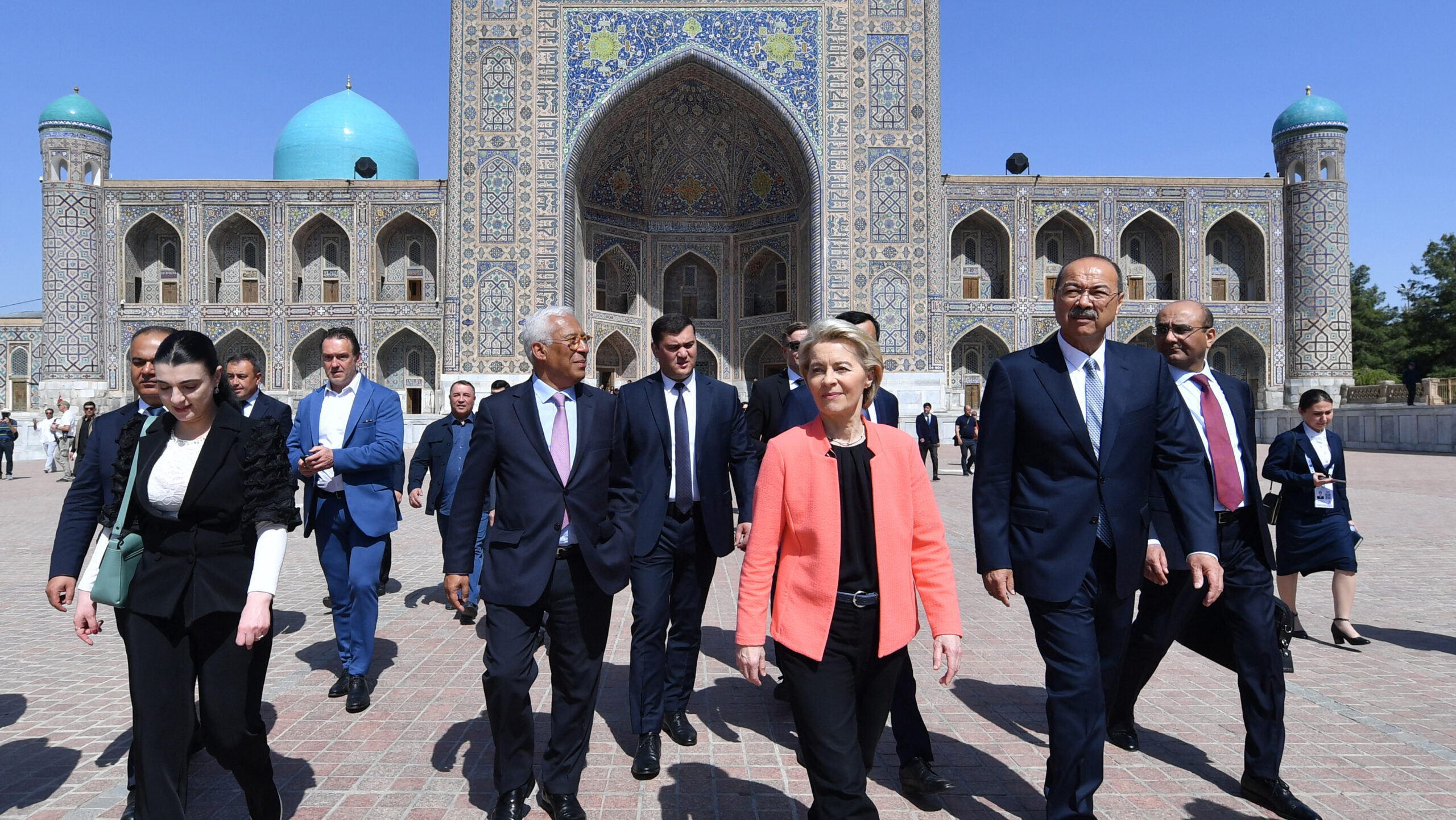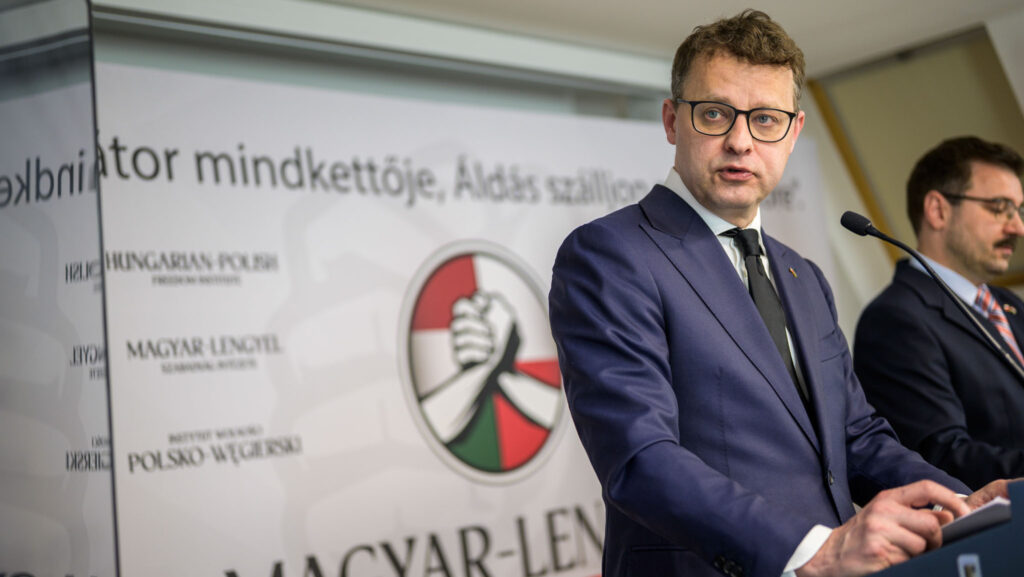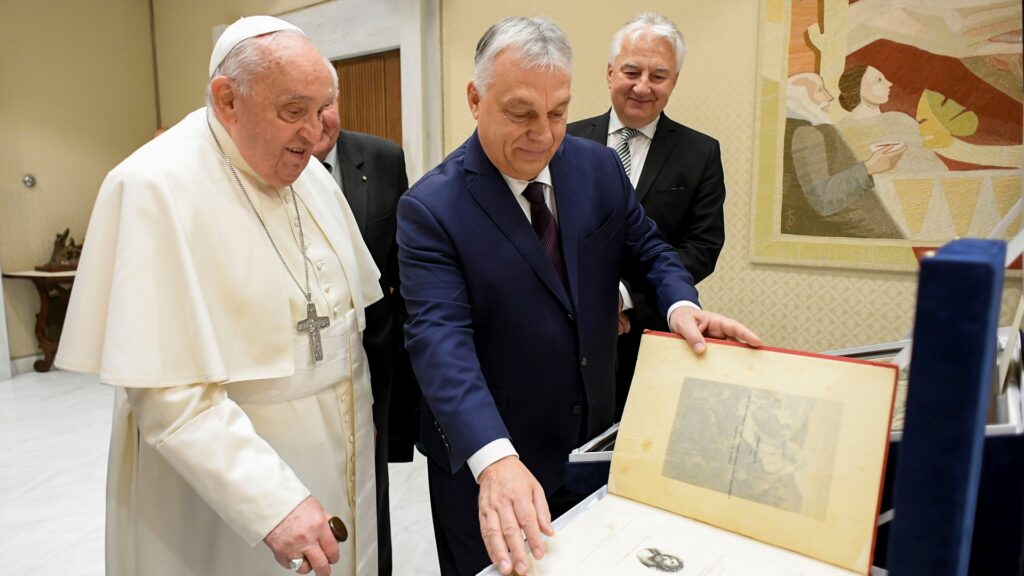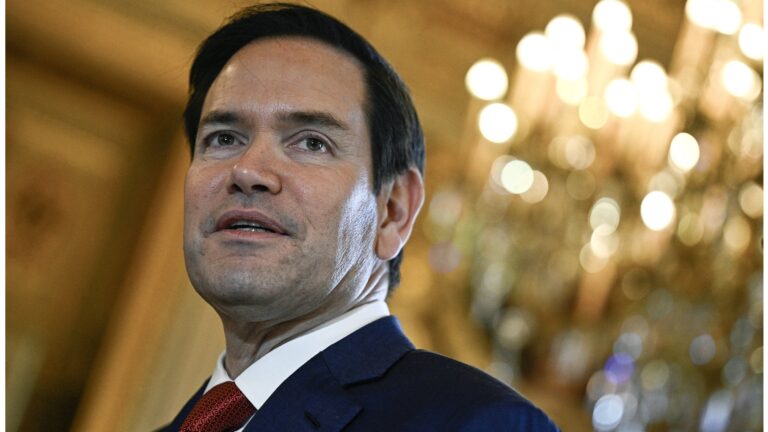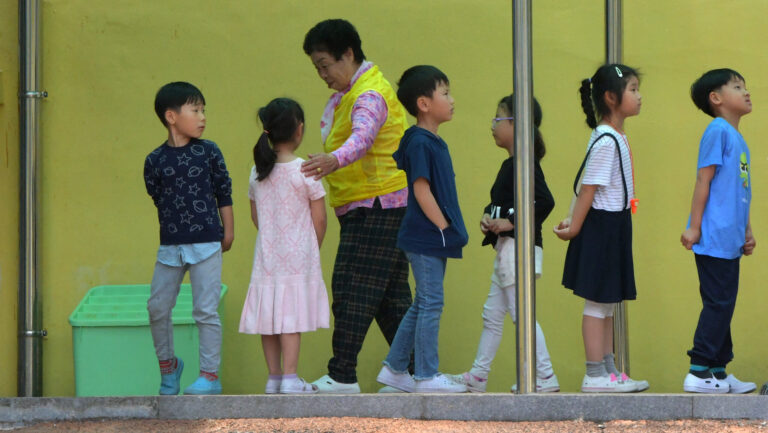European Commission President Ursula von der Leyen and European Council President António Costa travelled to Uzbekistan on Thursday to participate in the first-ever EU–Central Asia summit. Held on 3–4 April, the event brings together EU leaders with the heads of state and government of the five Central Asian republics: alongside the host, Uzbek President Shavkat Mirziyoyev, Kazakh President Kassym-Jomart Tokayev, Kyrgyz President Sadyr Japarov, Tajik President Emomali Rahmon, and Turkmen President Serdar Berdimuhamedov are also in attendance.
According to the official communiqué issued by the European Council, the summit offers a key opportunity for the EU to reaffirm its geopolitical interest in strengthening bilateral relations and enhancing regional cooperation with Central Asia. ‘During the summit, the EU will affirm its commitment to scale up cooperation in areas of mutual interest, which include transport and digital connectivity in the region and with the EU, critical raw materials, economic and security cooperation, and the energy transition,’ reads a statement issued by Council President António Costa.
Central Asia: Future Powerhouse in the Making
There is growing consensus among academics and regional experts that Central Asia is poised to play a far more significant role in global trade and international affairs in the coming years than it does today. According to recent projections by the European Bank for Reconstruction and Development (EBRD), the region’s economy is expected to grow by 5.7 per cent in 2025, outpacing even China. Compared with Europe, the contrast is striking: the EBRD forecasts growth of 2.7 per cent for Central Europe and the Baltic states, and 2.1 per cent for Southern and Eastern Europe. Chief Economist of the EBRD Beata Javorcik praised the region’s multi-vector foreign policy approach, which has contributed to a significant increase in greenfield foreign direct investment (FDI).
Since gaining independence in the early 1990s, the post-Soviet republics of Central Asia have achieved steady economic, political, and social progress—particularly Uzbekistan and Kazakhstan, the region’s two leading states. Both have pursued comprehensive reforms, transitioning from centrally planned economies to export-oriented market economies, while maintaining strong state influence in strategic sectors such as energy and natural resources. These reforms have been accompanied by social and political development, resulting in more democratic and prosperous societies. As Norbert Csizmadia writes in Eurasia, education, innovation, technology, and international integration have become core pillars of modernization across the region.
‘The five republics also boast vast reserves of oil, natural gas, critical minerals, and rare earth elements’
Strategically located along the ancient Silk Road, Central Asia serves as a key land bridge between Asia and Europe. In overland trade, the region is indispensable to connectivity between China and the European continent, as several recently launched transport corridor projects illustrate. The region also shares a border with Afghanistan, making it critical for efforts to combat illegal migration, drug trafficking, and smuggling.
Central Asia is also rich in natural and energy resources. Kazakhstan and Uzbekistan are among the world’s top uranium producers—Kazakhstan leads the list and holds the second-largest uranium reserves globally. The five republics also boast vast reserves of oil, natural gas, critical minerals, and rare earth elements—resources often described as ‘the oil of the future’. Furthermore, the region has immense renewable energy potential thanks to its mountainous terrain, extensive water reserves, and vast steppe and desert areas. Tajikistan and Kyrgyzstan, in particular, generate more than 95 per cent of their electricity from hydropower.
The Times They Are a-Changin’
Following the collapse of the Soviet Union, the newly independent republics adopted a foreign policy strategy known as ‘multi-vector’ or ‘hedging’, typically used by middle powers. This approach focuses on pragmatism and maintaining balanced relations with major powers. Surrounded by Russia, China, and Iran, the Central Asian states had little alternative. Historically, their ties were closest with Moscow—they joined Russian-led international organizations and often aligned with Russia in the United Nations.
That began to change after 24 February 2022, when Russia launched its full-scale invasion of Ukraine. The war sounded alarm bells across Central Asia, as fears mounted that they could be next in the event of Kyiv’s defeat. This drove a marked shift towards the West and China, with several unprecedented diplomatic moves reflecting a widening rift with Moscow. One symbolic moment came in June 2022, when Kazakh President Tokayev openly condemned Russia’s invasion while sharing the stage with Vladimir Putin.
‘EU is currently the region’s second-largest trading partner and its largest investor’
That moment marked the beginning of greater EU interest in Central Asia. Beyond efforts to weaken Putin’s influence, Central Asia could also play a key role in ending the continent’s dependency on Russian energy sources—or more precisely, to not buy it from Russia anymore, as Central Asian republics serve a significant role in circumventing Western sanctions.
The EU’s strategy for Central Asia was first adopted in 2007 and updated in 2019, emphasizing the region’s growing strategic relevance and aiming to foster stronger partnerships to support a more sustainable, resilient, and prosperous regional bloc. The EU is currently the region’s second-largest trading partner and its largest investor, accounting for more than 40 per cent of total foreign investment.
Welcome to the Turkic World—And Hungary in It
Still, if Brussels is serious about joining the great power competition for influence in Central Asia, it will need to offer something substantial. China has already established a strong foothold through Belt and Road Initiative investments and green energy projects. The United States, especially since Donald Trump returned to office in January, has also renewed its focus on the region. In a phone call with his Uzbek counterpart on 21 February, Secretary of State Marco Rubio underlined Washington’s interest in ‘mutually beneficial opportunities for investment in critical minerals’.
Despite increasing trade, few EU member states have cultivated deep bilateral ties with the region—except one: Hungary. Since Viktor Orbán returned to power in 2010, Hungary has pursued a foreign policy remarkably similar to that of the five Central Asian republics. Maintaining pragmatic relations across all continents, Hungary has forged close partnerships throughout Asia, Africa, the Middle East, and the Caucasus—and Central Asia is no exception. In fact, it has arguably become one of Hungary’s most important strategic partners.
Under the Eastern Opening policy, Hungary has rapidly expanded cooperation with Central Asian states in education, technology, energy, agriculture, pharmaceuticals, and security. Hungarian exports to the region have risen, and more Hungarian companies are investing there.
‘Under the Eastern Opening policy, Hungary has rapidly expanded cooperation with Central Asian states’
Since 2005 Hungary has invested over $370 million in Kazakhstan’s economy. Around 30 Hungarian companies and 40 joint ventures operate in the country, including major firms such as MOL Group, UBM Group, and LAC. Holding. UBM is set to invest $83 million in four feed and premix plants across Kazakhstan. The two countries aim to increase bilateral trade from $200 million to $700 million by 2027.
Similar dynamics are evident in Uzbekistan. In 2023 OTP Bank acquired a 75 per cent stake in Ipoteka Bank, Uzbekistan’s fifth-largest bank. The two countries also agreed to create a special industrial zone near Tashkent, giving Hungarian firms legal advantages for investment.
Hungary and Kyrgyzstan recently established a joint development fund in January 2025 with the initial capital of $16 million, supporting the market entry of four Hungarian firms.
But the Eastern Opening goes beyond economic pragmatism. It is also rooted in shared historical and cultural traditions. ‘When you travel to the West, you always feel like you're visiting. If you go East, you feel you're coming home,’ Hungarian Agriculture Minister István Nagy said in a recent interview with Eurasia. ‘You can feel the kinship that comes from our history.’
Hungary became an observer member of the Organization of Turkic States (OTS) in 2018, and in 2019 the organization opened a representative office in Budapest. Hungary will host an informal OTS summit in May, a proposal put forward by Orbán at last year’s meeting in Bishkek. In November the Hungarian prime minister was awarded the Supreme Order of the Turkic World, the OTS’s highest honour.
Hungary Proven Right...Again
If the European Union is serious about engaging with Central Asia, then Hungary—and Viktor Orbán—hold the key. This creates a paradox: Brussels has spent years treating Hungary as a punching bag, accusing Orbán of undermining the rule of law, aligning with Moscow, and criticizing the Eastern Opening policy. In past years, experts, EU officials, and the Hungarian opposition frequently ridiculed Orbán’s overtures to Central Asia and the Turkic world.
Yet once again, time has proven Hungary’s pragmatic approach correct. Orbán recognized the shifting global order well before his European counterparts and began diversifying Hungary’s trade relationships to reduce dependency on the West—earning him outrage in Western capitals at the time.
But with Donald Trump’s return to the White House and the EU facing growing international isolation, Brussels has little choice but to engage with regions like Central Asia, Southeast Asia, and other non-aligned states. In that game, no EU country is better positioned than Hungary.
Related articles:

